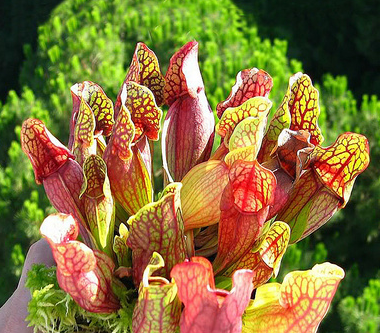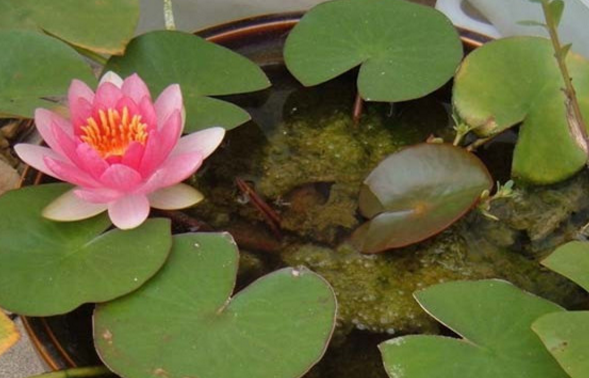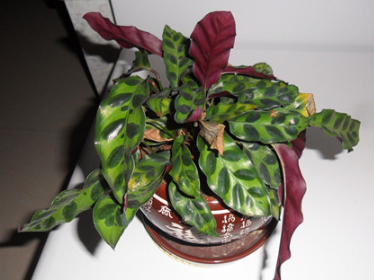How to raise insectivorous plants
Plants, many think this is vegetarian, in fact, not so, there are some plants are to eat meat, to see what insectivorous plants? How to feed insectivorous plants:

Sarracenia
Unlike other insectivorous plants, Sarracenia eats not only small insects but also large animals like mice. Moreover, Sagittarius is one of the most beautiful carnivorous plants. Each leaf of Sagittarius is like a vase, so it is called Sagittarius. Each leaf is a bug catcher.
pitcher plants
Nepenthes is perhaps the most famous insect-eating plant, and its insect-catching bags, or hanging cages, are attractive to insects. The smooth mouth of the bag and the normally half-open lid also have nectaries that secrete sweet nectar to attract insects. When these "small prey" come to eat honey, they will slip into the bag and fall into the "liquid pool" at the bottom of the bag, becoming the "food" of Nepenthes.
flytrap
Venus flytrap can be said to be the strongest insect catching ability in nature. It has two leaves, shaped like clips, which are usually open and curved outward. If an insect touches the Venus flytrap, it will immediately close, half of the insect's body is inside the leaf, the other half is struggling, but the more it breaks free, the tighter it will be.# p#subtitle #e#
Insect-catching pansy
Small insectivorous plants with soft temperament, meat friends who see insectivorous pansy for the first time, it is estimated that they are some flesh of the genus Pseudostachys of Crassulaceae. Although they look fleshy (the leaves are really fleshy), they are not succulent plants, but insectivorous good flesh. The leaves are beautiful like a flower that blooms forever. The leaves are covered with glands that secrete mucus. When there are small insects near, they can stick the insects like sticky paper and digest them.
sundew
Very delicate and charming small insectivorous plant, leaves with glandular hairs, grass color is generally green, in good light can be bright red or yellow-green, shape is also very variable, can secrete mucus, the external image is full of dew, crystal clear, like sticky paper to stick insects, and digestion and absorption.
Now let's see how insectivorous plants are raised! First of all, we need to understand that insectivorous plants get nutrients by catching insects, so their roots are not developed and their absorption effect will be poor. Moreover, the cultivated soil sold in the market has too much fertilizer, so it is not suitable for growing insectivorous plants. Suitable for insect-eating plants should be no fertilizer peat, pearlite, moss, sand, red jade soil and so on.
Also, most insectivorous plants love wet environments, so spread wet moss on flowerpots and spray more water. In addition, insectivorous plants had better use water with low mineral content, friends may wish to use rainwater irrigation.
So much for insectivorous plants, have you ever seen one? Insectivorous plant farming methods are similar, hurry to see.
What are the insect-eating plants?
Summer is coming, especially in the south, the weather will become very hot and humid, the humid environment is very easy to provoke mosquitoes, mosquitoes at home is undoubtedly the most annoying, so what can be solved? Insectivorous plants are best cultivated at home, which can both repel insects and green the environment. Xiao Bian today will show you what insectivorous plants have and how insectivorous plants look like.
1. What are the insectivorous plants
There are many kinds of insectivorous plants in nature. Xiaobian will introduce several common ones to you!
1. Sagittarius: Unlike other insectivorous plants, Sagittarius eats not only small flying insects, but also large animals like mice. Moreover, Sagittarius is one of the most beautiful carnivorous plants. Each leaf of Sagittarius is like a vase, so it is called Sagittarius. Each leaf is a bug catcher.
2. Nepenthes: Nepenthes is the most famous insect-eating plant. It has its own insect catching bag. The mouth of the insect catching bag is very smooth. There are nectaries distributed inside, which can secrete sweet nectar to attract mosquitoes and eliminate mosquitoes.
3. Venus flytrap: Venus flytrap can be said to be the strongest insect catching ability in nature. It has two leaves, shaped like clips, which are usually open and curved outward. If an insect touches the Venus flytrap, it will immediately close, half of the insect's body is inside the leaf, the other half is struggling, but the more it breaks free, the tighter it will be.
Second, how to raise insectivorous plants
Now let's see how insectivorous plants are raised! First of all, we need to understand that insectivorous plants get nutrients by catching insects, so their roots are not developed and their absorption effect will be poor. Moreover, the cultivated soil sold in the market has too much fertilizer, so it is not suitable for growing insectivorous plants. Suitable for insect-eating plants should be no fertilizer peat, pearlite, moss, sand, red jade soil and so on. Also, most insectivorous plants love wet environments, so spread wet moss on flowerpots and spray more water. In addition, insectivorous plants had better use water with low mineral content, friends may wish to use rainwater irrigation.
The above is how to cultivate all the contents of Cordyceps sinensis, do not know smart you learned it? The scorching summer is coming, do not want to fly all over the house mosquitoes, then quickly plant a few pots of insectivorous plants!
How do insectivorous plants grow?
How do insectivorous plants grow?
[Expert Answer]
Photo: Insectivorous Plants
● Poor soil
Suitable for the cultivation of insectivorous plants commonly used substrate are: non-fertilizer peat, pearlite, moss, sand, red jade soil and so on. Commercial culture soil contains more fertilizer, not suitable for planting insectivorous plants, special attention must be paid!
Common matrix and formula:
Peat: pearlite or coarse sand =2:1 --suitable for most insectivorous plants, cheap and adaptable.
Peat: pearlite =1:1 --suitable for pot dipping (pot soaking in a watery pot mat) or for plants that prefer drying and aeration. (such as Nepenthes, Northern Territory grass, etc.)
peat: pearlite: moss =5:3:2 --can improve the water retention and permeability of the matrix.
Pure peat-suitable for growing hygrophilous plants. Coarse peat blocks can also be used to grow plants that like to breathe or to grow in large pots.
Pure water moss-suitable for hygrophilous plants or breeding, cuttage, good water retention and permeability, but the surface is easy to rot, need to be replaced in time; can also be placed on the bottom of the basin or spread basin surface, used to prevent soil erosion or improve air and substrate humidity.
Granular soil (red jade soil, phytolith, diatomite, etc.)-suitable for pot immersion planting or like dry and breathable plants, can be mixed with a small amount of peat moisture and increase nutrients.
Coconut pieces, coconut shreds, coconut chaff-mainly used for planting Nepenthes and insect-catching pansy, can also be mixed with peat, pearlite, water moss and other media, need to be desalinated, and then washed many times before use, no experience is recommended to try
Vermiculite-small amounts added to plants or seeds.
Note: When planting in large pots, the proportion of large particle medium should be increased to improve the permeability and drainage of the matrix.
·Pure water
Water is important to provide a medium with low mineral concentrations for insectivorous plants. More ideal irrigation water sources are rainwater, bottled water (including purified water, mineral water, although mineral water contains a small amount of minerals, but only five to one tenth of tap water), pure water machine water, condensed water (air conditioning, refrigerator water) and so on.
Only tap water with low mineral concentration can be used for insectivorous plants. The mineral concentration of tap water can be measured with a commercially available TDS pen. Generally, tap water with total dissolved solids below 100PPM is suitable for use. Tap water with total dissolved solids of 100-200PPM can be used. However, when there is yellow-white mineral precipitation on the surface of the basin, the soil or surface matrix should be changed in time. Tap water with total dissolved solids above 200PPM is not recommended for use. It is recommended that tap water be left for a day or two before use to eliminate residual chlorine.
● Humid environment
Most insectivorous plants prefer a moist environment, and moisture enrichment methods can be used to increase substrate and air humidity.
Moisturizing: Use a more closed environment, such as in a fish tank or greenhouse, or cover it with a transparent disposable cup or plastic bag with an opening. (Closed environment should pay attention to prevent sun exposure, avoid heat loss can not make plants die.)
Humidification: pot immersion planting (pot sitting in water tray), pot surface spread wet moss, frequent spraying, use automatic sprinkler or humidifier, etc. Wet environment, fungi are also easy to breed, should avoid too dark, frequent ventilation, light also helps to sterilize.
● Adequate lighting
Most insectivorous plants need plenty of light to grow quickly and become more colorful. However, more attention should be paid to the greenhouse effect when planting in a closed environment. In order to prevent excessive temperature, proper ventilation or shading should be adopted. Plants can also be placed in places where there is no direct sunlight but bright scattered light. Generally, plants need to be shaded from the strong sunlight at noon in summer (except peacock and other northern territory grass), otherwise their leaves will be burned by the sun. Shade-loving or heat-fearing plants should also provide bright scattered light. If indoor planting, poor lighting needs artificial supplementary light, can use all kinds of lights or special plant growth lamps. In order to make full use of light efficiency and prevent plants from being dried, general fluorescent lamps and LED lamps are 10-30 cm away from plants, incandescent lamps, halogen lamps, etc. are 20-100 cm away from plants according to calorific value, providing about 12 hours of light every day.
·The right temperature
Temperature is also a very important factor for insectivorous plants, beyond which they will stop growing or hibernate, or even die. Most insectivorous plants can grow normally in the range of 10-35 degrees, and many insectivorous plants cannot adapt to the temperature changes in most parts of our country throughout the year. Therefore, when purchasing insectivorous plants, we should understand the temperature range that they can adapt to. If the environmental temperature you plant cannot meet her requirements, we must consider heating or cooling measures.
Heating: generally need to provide a closed environment to prevent heat loss, can use heating rods, heating pads, heat gathering lamps, heaters and other heating equipment heating, the simplest can also use boxes and lamps for temporary heating. The most important thing for heating is to pay attention to safety. Do not get too close to the heat source and inflammable substances or plants. The heating rod should prevent dry burning.
Cooling: Simple method can be used a container (do not use glass bottles, will freeze crack) filled with water, in the refrigerator into ice, together with plants in a large container (such as fish tank, etc.). If there are many plants to be cooled, automatic spraying, refrigeration cabinets, air conditioners and other cooling equipment can be installed.
● Nutrient supply
Carnivorous plants are insect-eating plants, which is the way nutrients are obtained unique to this population. If they grow in an environment where insects are present, they are generally able to catch insects on their own and obtain the nutrients they need. It can also be artificially fed small insects or high-protein foods, which is one of the great pleasures of growing insectivorous plants. When feeding, pay attention not to feed too much, so as not to digest, produce corruption, affect hygiene and beauty. In order to avoid these problems, it is recommended to use fertilization to provide nutrients, generally using sprinkler irrigation, and the concentration of fertilizer diluted is about 1/5 of that of ordinary plants. In the growing season to use general compound fertilizer, such as product description of ordinary plants diluted a thousand times, for insectivorous plants should be diluted about five thousand times, spraying the whole plant or irrigation trap, 1-2 times a month. Fertilization would rather be thin and frequent, not too high concentration, so as not to cause serious consequences of fat injury or even death, do not apply fertilizer at will without experience.
[Summary]
Insectivorous plants are a relatively rare species, mostly living in alpine wetlands or swamps, so the cultivation requirements of insectivorous plants are different from ordinary flowers and plants. In this article, the first agricultural economics editor introduces you how to raise insectivorous plants from the aspects of soil, water quality, environment, light, temperature and nutrients. I hope it will help you.
- Prev

How to cultivate lotus in water and how to use water
The bowl lotus, literally means the lotus planted in the bowl, of course, it can not only be raised in the bowl. The bowl lotus is small and lovely, elegant in posture and properly farmed, so it is quite an artistic conception for watching bonsai. Today we will learn about how to raise bowl lotus! How to cultivate bowl lotus the culture method of bowl lotus
- Next

What if the leaves of cat's eye bamboo taro turn yellow? do they bloom?
Cat's eye taro can be used as landscaping, planted in the courtyard or park for viewing. It is also a very valuable plant. Do you know it? if you don't understand it, take a look at the beauty of Cat's Eye Taro. What to do about the yellowing of cat's eye taro leaves? the causes and treatment methods of yellowing of cat's eye bamboo taro leaves
Related
- Fuxing push coffee new agricultural production and marketing class: lack of small-scale processing plants
- Jujube rice field leisure farm deep ploughing Yilan for five years to create a space for organic food and play
- Nongyu Farm-A trial of organic papaya for brave women with advanced technology
- Four points for attention in the prevention and control of diseases and insect pests of edible fungi
- How to add nutrient solution to Edible Fungi
- Is there any good way to control edible fungus mites?
- Open Inoculation Technology of Edible Fungi
- Is there any clever way to use fertilizer for edible fungus in winter?
- What agents are used to kill the pathogens of edible fungi in the mushroom shed?
- Rapid drying of Edible Fungi

